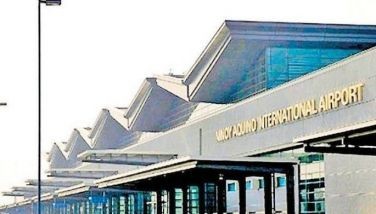Exporters diversified amid a weak US, Euro economy
CEBU, Philippines - As a number of exporters diversified their businesses to other more profitable ventures while the export sector continue to weaken in 2011 amid the lingering effect of the global recession, the survivors reported a modest growth within the year.
Department of Trade and Industry (DTI-7) regional director Asteria Caberte said some furniture exporters are seeing a slight improvement although still not too encouraging but nevertheless "there is still business going on."
Caberte added that although there were no reports of company closures in the export industry this year, it is good to note that some exporters have learned to diversify their businesses while the market is still under pressure.
Moreover, the government has reached out to the exporters, especially in Cebu, to support the sector and keeping it afloat while its largest markets, the United States and Europe, continue to struggle with economic problems.
In the first quarter of 2011, export figure dipped by 18 percent, further drop in the figure was noted in the next quarters this year, thus Caberte said the government had introduced a program to caution the plunge, by activating the potential tourism and domestic markets.
In 2010, exports in the country grew by 28 percent. This year, Caberte said growth is expected to be lesser than that of last year.
According to Cebu export sector, led by the Cebu Gifts, Toys and Housewares, Foundation Inc. (Cebu-GTH) president Ramir Bonghanoy, those that managed to survived this year has seen slight improvement in the demand.
Bonghanoy said those who were able to position themselves in the extreme high-end market, were less affected by the further plunge of demand this year, while those that fought to survive had been able to gain customers from other emerging markets such as Russia, and Middle East.
The active domestic market has also contributed to the sustained business operations of some export companies, Bonghanoy said.
During the recently concluded Philippine Export Development Plan (PEDP) workshop held in Cebu, exporters urged to exert more effort to take advantage of the domestic market potential, capturing the tourists visiting the country as well.
Based on the PEDP target, export in the country targets to generate at least US$89 billion by 2013. Next year, the DTI, in cooperation with private stakeholders in the export sector will introduce programs that will help the export industry thrive, and find out detailed concerns—at source.
DTI in partnership with GTZ (German Technical Cooperation) is currently doing a study on how to effectively tap the domestic market, specifically for furniture exporters.
This is one of the frameworks that will also be included in the PEDP 2011-2013, wherein inclusive growth in the export sector is encouraged.
This time, the export sector will grow together with tourism, services, and agriculture sectors.
Caberte emphasized that although the region’s merchandise export earnings increased in January to February of this year, this increase was not sustained as global demand for the region’s products softened along with the weakening of the recovery of the US and European economies.
“Exports being the most vulnerable to offshore developments, is always the first to experience the impact of external turmoils,” she said.
Besides electronics, the region’s other key regional exports include other industrial goods, steel/metal products, electrical equipment, garments, vehicles/machinery parts, furniture, other consumer goods, fashion accessories, gifts, decors and housewares, among others.
“In order to improve export performance of Central Visayas, we plan to develop the regional product, market and promotion strategies,” said Caberte.
Towards the third quarter of this year, the Export Development Council (EDC) has scaled down its export target for 2011, while the sector’s performance in the last few months has indicated slow pace movement.
EDC report said that export sector in the Philippines is expected to end the year with less than 10 percent growth.
Offical statistics on electronics part imports for the month of July indicated a 28.6 percent dive compared to similar imports recorded in July of 2010.
The import slowdown in electronics raw materials imports was seen as a barometer of the industry’s performance for the two succeeding months of August and September.
The anemic demand for high-tech products in the matured economies of Europe and United States was seen as the biggest negative factor in the performance of the country’s number one segment in the export industry.
Export stakeholders are “crossing their fingers” that a recovery may be staged in the last quarter of this year, when holiday shopping in the Christian world may bolster demand for Philippine export goods. This may pull-up export performance as the year is about to end.
In an earlier interview with PhilExport president and chief executive officer (CEO) Sergio Ortiz-Luiz Jr., he said that the Philippine export industry is still confident that could hit a good growth figure this year.
He said that aside from China, Japan, and Europe, the Philippine export is also getting its confidence from the growing market in Asia.
The Philippines now is growing its business within the Asian market, and this may offset the decline of orders coming from the US, Ortiz-Luiz said. (FREEMAN)
- Latest
- Trending





















